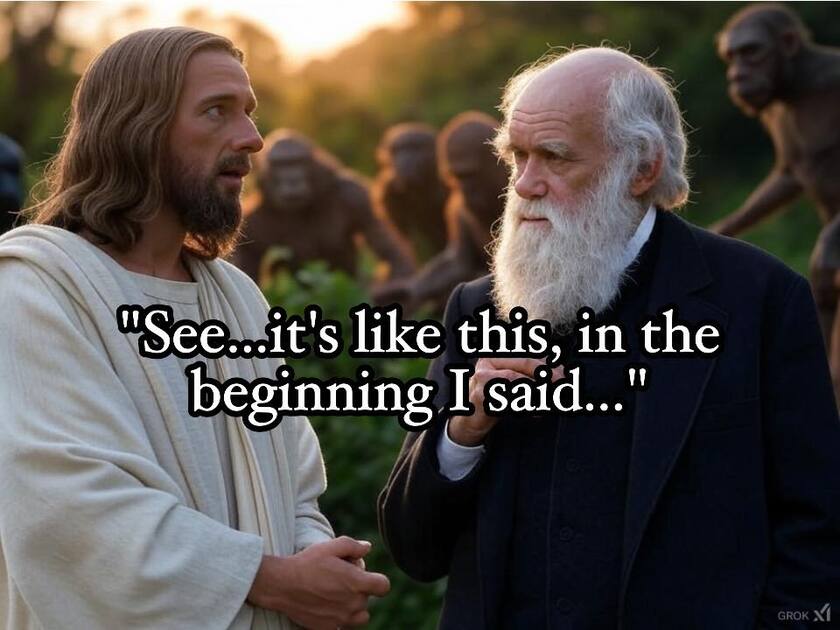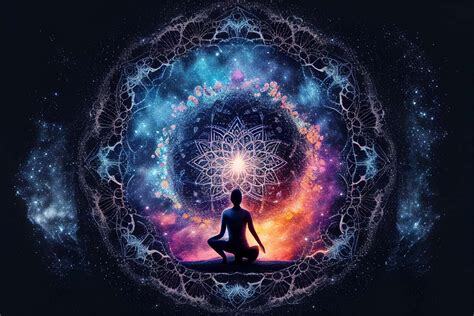Which Came First, The Creator or the creation?
Romans 1:20
"For his invisible attributes, namely, his eternal power and divine nature, have been clearly perceived, ever since the creation of the world, in the things that have been made. So, they are without excuse."
Living and working in Central New York State, Botanist, Presbyterian congregationalist, and theologian, Asa Gray spent a great deal of time corresponding with Charles Darwin on the subjects of natural design and religion. They were pen-pals I guess you could say. Asa Gray was born in 1810 in Sauquoit, New York and he spent some time in Hamilton, New York, not far from my hometown. He also taught mineralogy in Utica, New York, and he opened up a medical office in a tiny little town known as Bridgewater, in Upstate N.Y. All these places are near and dear to my history. And eventually he landed a position appointing him as Professor of Botany and Zoology at the University of Michigan, and again eventually as Fisher Professor of natural history, at Harvard University, 1842-73.
His story is fascinating and storied, far more than I want to get into here, but for my purposes I find him incredibly interesting because first off he's from my home region in New York State. And he's from that enlightenment era as well when so much was happening in the Christian faith universe, especially among Congregationalists in Upstate NY (Charles Finney for example). Also, me being a semiprofessional and amateurish botanist/horticulturalist, I'm intrigued by his studies and travels. And that brings me too why he's really interesting to me.
In 1855 Asa Gray and Darwin first began corresponding, and that correspondence continued for the rest of Darwin's life. Asa Gray wrote a series of reviews on Darwin's works for American magazines reflecting on the implications of Darwin's theories in matters of natural theology and religious belief.
Asa's examinations asked questions like,
"Is Darwin's theory atheistic or pantheistic? or, does it tend to atheism or pantheism?"
I don't think Gray thought Darwin was fully atheist. And I tend to agree.
He was ultimately pondering whether design or necessity is at work in the universe. He examined Darwin's selection theory of developing creatures throughout earth history. And using logic, he tried to work out how for instance an eyeball emerged in animal evolution from an animal that previously had no optic nerve or "cognizance of the internal perception, or the mind" to even comprehend a need to see a thing in that manner. He's searching for the necessity in the evolutionary process. And it just never really and fully comes. Not to the degree that Darwin asserted.
He determined in this case that the creature wouldn't perceive light and dark within the same context as we might imagine because it doesn't have what we see as the sense of sight. At least not in our own senses. It can't need what it can't perceive is the idea.
"He would have no power of discriminating form, size, shape, or color, the difference of objects, and to gain from these a knowledge of their being useful or hurtful, friends or enemies."
So, where's the necessity for change?
In this way, Asa made his case for heavenly design in the creation of all things. Especially proved by the complexity of the eye. He argued that the creature could not have come into form and being without a Creator acting toward that end with intelligence, perception and design.
Darwin, on the other hand argued that from one generation to the next the creatures developed a little more sensitivity to light than their parents did, and therefore they passed on their genetic information with others like them, not those who have not developed this kind of improvement. They selected those friends to mate with who were like them. And Darwin assumes they were discriminating and unimpressed by others not like them.
On the other hand, Gray's theory supposed that once "the want" is set into motion, then necessity sets in. So, the designer creates the situations, all its elements, all its structures for development. And then the evolutionary process begins. Once the Lord said...
"Let there be..."
Then natural selection begins. Natural variation, the struggle for life, and natural selection, then must all move forward by necessity under the inertia of that Creative word from God. And if you were to interrupt or interfere with that inertia, taking away any of the struggle for life from one or the other creature, then neither of these designed animals would have gone on to eventually develop eyes. The inertia must go on by design or it cannot survive chance. Without the design there is no evolutionary process. Accidents occur but cannot produce certainty. Without the predetermined certainty of design, the creatures would simply continue sightless on the path where they began.
I love what Asa says here:
"One, indeed, who believes, from revelation or any other cause, in the existence of such a Creator, the fountain and Source of all things in heaven above and in the earth beneath, will see in natural variation, the struggle for life, and natural selection, only the order or mode in which this Creator, in his 'own perfect wisdom, sees fit to act."
(DESIGN VERSUS NECESSITY, American Journal of Science and Arts, September 1860)
Amazing! That's a lot of words but he's right. Say what you will about natural selection and Darwin's theories, but at the end of the day without a Divine Architect planning every variation, the formless void would have never moved beyond its innate formlessness. Without the breath of God there is no chance that chance is going to form something from nothing. Certainly energy and material resources dictate the process to some degree, for life is consummation and regeneration, but life itself cannot initiate new or reformed life without a Creator determining its parameters and aims.
Gray is arguing that creation itself gives evidence of design.
"Conviction was not produced through testimony or eyewitness, but design was irresistibly inferred from the evidence of contrivance in the eye itself."
You can see God's design in your own eye. Just look in a mirror.
And he likewise argued that the natural variation is by design. The complexity is by design. The evolutionary process is by design. The struggle for life is by design. Where Darwin saw that providence favors the strongest, Gray sees Providence is our Creator God, saying, "good breeding...makes the most of every creature's best."
Which is obviously a Godly and good work of creation.
Darwin believed that natural selection leads to a divergence of characteristics. He figured that as a creature inhabits a greater space in greater numbers, this naturally, though indirectly, means that it will diverge in its structures, habits, and constitution. And under these circumstances it would lead to mass extinction of the unimproved species. The Bible on the other hand demonstrates a direct cause for variation. The Bible teaches species were directly, instead of indirectly, created after their own respective kinds. The Bible is more scientific in its estimations. For instance, when observing the solar system, the Bible teaches that light, heat, electricity, magnetism, chemical affinity, and mechanical power are derivative and convertible forms emanating from One force. One source, our Creator. Science sees a design in the heavens and therefore science sees a designer.
Asa Gray viewed the living species on earth as creatures orbiting their own systems not unlike the solar systems. Each species is associated geographically with its kind and is distinguished and distributed across that region by its various characteristics. Not unlike the moons of Jupiter orbiting the planet. He saw this phenomenon occurring by design by observation while Darwin speculated it occurs by chance. Where they differed was Darwin was fully convinced that species are not immutable, and Gray believed that each species has been independently created. Darwin traced all living creatures from one kin, while Gray followed the Biblical tradition that each was formed and designed by its Creator independently from the other.
"Probably all the organic beings which have ever lived on this earth have descended from someone primordial form, into which life was first breathed." - Darwin
Close, but not quite. They all were breathed into life by God in the beginning, but then the Designer formed them.
From my observations, Darwin supposes a lot. In fact, everything he has proposed is supposed. He hasn't submitted anything that goes beyond natural selection observed in the natural hybridization processes that occur among specific populations of all living species. He hasn't made the connection between the differing species. And he counted heavily on a future discovery to prove out that theory of his.
At one point in their conversations, Darwin admitted to his pen-pal Asa Gray, that if this future discovery, which he thought was directly around the corner, did not come to light, then his theory had no legs to stand upon. Because it wasn't that his religious contemporaries didn't agree that species evolved improved hybridized forms within their own environments and families, but they could not make the leap that all shared common ancestral kin across the vast groups of various species.
Darwin knew his theory would fall flat absent the so-called missing link. The link that more than a hundred years later remains missing still.
What we can discover about Darwin's state of mind in these conversations in regard to matters of spirituality and faith is that Darwin was not unlike most atheists or agnostics, they saw the God of the Bible as a malevolent being.
Like every atheist he challenged:
"How could such a Being design a struggle for existence, a survival of the fittest-- war for all and death for some?"
But Darwin wasn't completely atheistic. He sought out God in the mechanics of the natural order. I think what drove his theory was a search for God. But he was offended by the God of the Bible.
For him the issue is trying to fathom a God who allows for destruction. For Darwin, a doctrine of design that included evil and suffering was not worth embracing. And this is a common sentiment among atheists. And likewise, they all miss the reality that if you're going to dismiss the Creator's design for its destructive forces, you also dismiss its beauty and goodness.
Basically, they are coming at the issue from opposite ends of the design process. Asa Gray began with a belief in God and saw design in Nature as a result of that belief. Darwin followed the traditional Paley theological view of design and tried to go from design in Nature to belief in God. This is why he spent a lifetime conversing with Asa Gray about the natural world and matters of faith. Darwin could observe complex natural orders and see a need for a designer in those observations, but he couldn't reconcile the death destruction of that design to an all-powerful and loving God. It's funny because the joy, love, faithfulness and godliness was ever present in their conversations. Though they were opposed in which came first, God or the creation, they remained friends and were kind to each other.
As for me, I accept the reality that interspecies hybridization is a naturally occurring phenomenon. It's observable and provable. But unlike Darwin I cannot make the leap to intraspecies theory and the ancestral singular life form common to all species. I'll tell you what I think. Darwin wouldn't see the obvious solution being that the origin starting point, the universal ancestral form is The Holy Spirit who hovered over the abyss and spoke life into existence. He designed it and set it on its way each according to its own kind. And included in that design comes the destruction of some, and the beauty of others. And I can accept both and give glory to God for it all. Good, bad, or ugly, I see it all as God's glory by design.
1 Corinthians 8:6
"Yet for us there is one God, the Father, from whom are all things and for whom we exist, and one Lord, Jesus Christ, through whom are all things and through whom we exist."




















